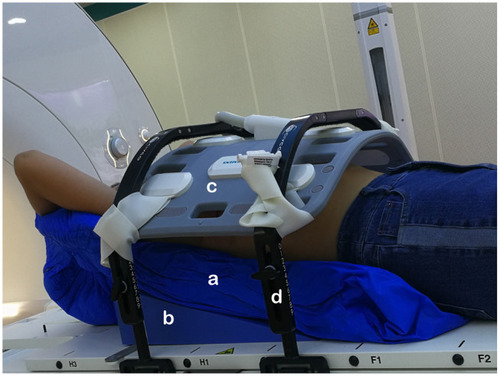Figures & data
Figure 1 Magnetic resonance simulation body positioning system of immobilized patients. a, styrofoam; b, wedge plate; c, radiofrequency coils; d, adjustable bridges.

Table 1 Mean Volumes (cm3) of the Tumor Bed Between CT and MR
Register now or learn more
Open access
Figure 1 Magnetic resonance simulation body positioning system of immobilized patients. a, styrofoam; b, wedge plate; c, radiofrequency coils; d, adjustable bridges.

Table 1 Mean Volumes (cm3) of the Tumor Bed Between CT and MR
People also read lists articles that other readers of this article have read.
Recommended articles lists articles that we recommend and is powered by our AI driven recommendation engine.
Cited by lists all citing articles based on Crossref citations.
Articles with the Crossref icon will open in a new tab.